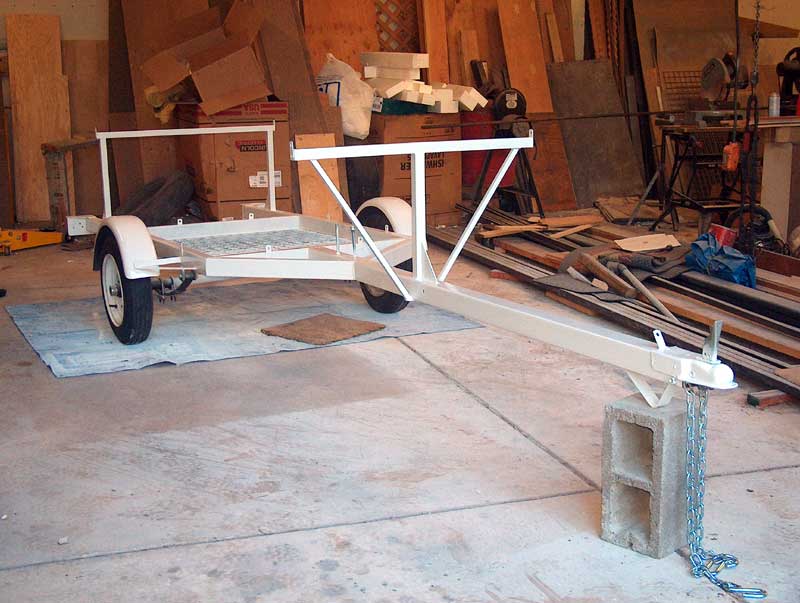Well, I had a similar, though not identical, problem. When I had to replace my last small pick-up I ended up with a Rav4 that had only three feet between the cross bars and very little roof to work with - and an 18.5’ canoe that needed to be transported somehow. I just didn’t think that was enough separation in the crossbars to safely support that long a canoe. (I always had 6 or 7 feet on my truck cap racks, which gave me a nice secure set-up. I figure if the boat is supported in thirds, its pretty well supported.) And I had five other canoes that I might possibly want to haul simultaneously.
So, like you, I considered modifying a regular boat trailer to make a canoe hauler - and I just couldn’t stomach paying the cost of a full on commercially manufactured canoe trailer. I’m not a wealthy man.
Here’s what I ended up with. (And there still are - and perhaps always will be - some “finishing touches” yet to add.)
I found the trailer on craigs list for $250. Not being a welder myself, I had to hire the assembly of the “trees” - $500. The boxes used (one sheet each) 3/4", 1/2", and 1/4" marine plywood. Primer, varnish, and new tail lights. Came out near a grand, about a third of the cost of a new commercial trailer.
For your project the welding job would be cheaper, I’d think.
What I learned: This thing vibrated a lot initially. Use 2 or 2 1/2" square steel for the uprights rather that the 1 1/2" sq. like I used. (I had to add additional side bracing to calm things down.) Use 1 1/2" square steel for the horizontals rather than 1 1/2" angle iron. (Again to mitigate vibration.) Same with the center bar that runs between the two supports. For a single level, single boat, rack you may not need the diagonal bracing. If it turns out to be necessary, it can pretty easily be added later. Its probably wise to make your front supports an inch or two lower than the rear support - to keep the boat from catching wind on the highway and hopefully improve gas mileage a bit.
I think the trailer was designed to haul a much heavier load than I’m using it for. I may try pulling one of the three leaves out of the leaf springs to give it a softer ride. I still need to add hasps to lock the boxes. Some reflective tape on the rear bars would improve night visibility and eventually I’ll put some enamel over the primer… I just wanted to get the superficial rust sanded out and sealed for the time being. I may make another long thin box that U-bolts to the tongue to transport paddles.
Still, its functional now and has made a couple long trips without problems. That included some pretty rugged roads at Arkansas boat landings with a full load of gear and boats, St. Louis traffic, and a couple 10 hr round trips to L. Superior. It works and works safely…
Hope this is of some assistance in your project.
And I’d suggest it’s better to carry a canoe by the gunwales, if for no other reason than to keep rain out of it. Just my $0.02 worth on that. I’m sure there are reasonable people who do otherwise.





